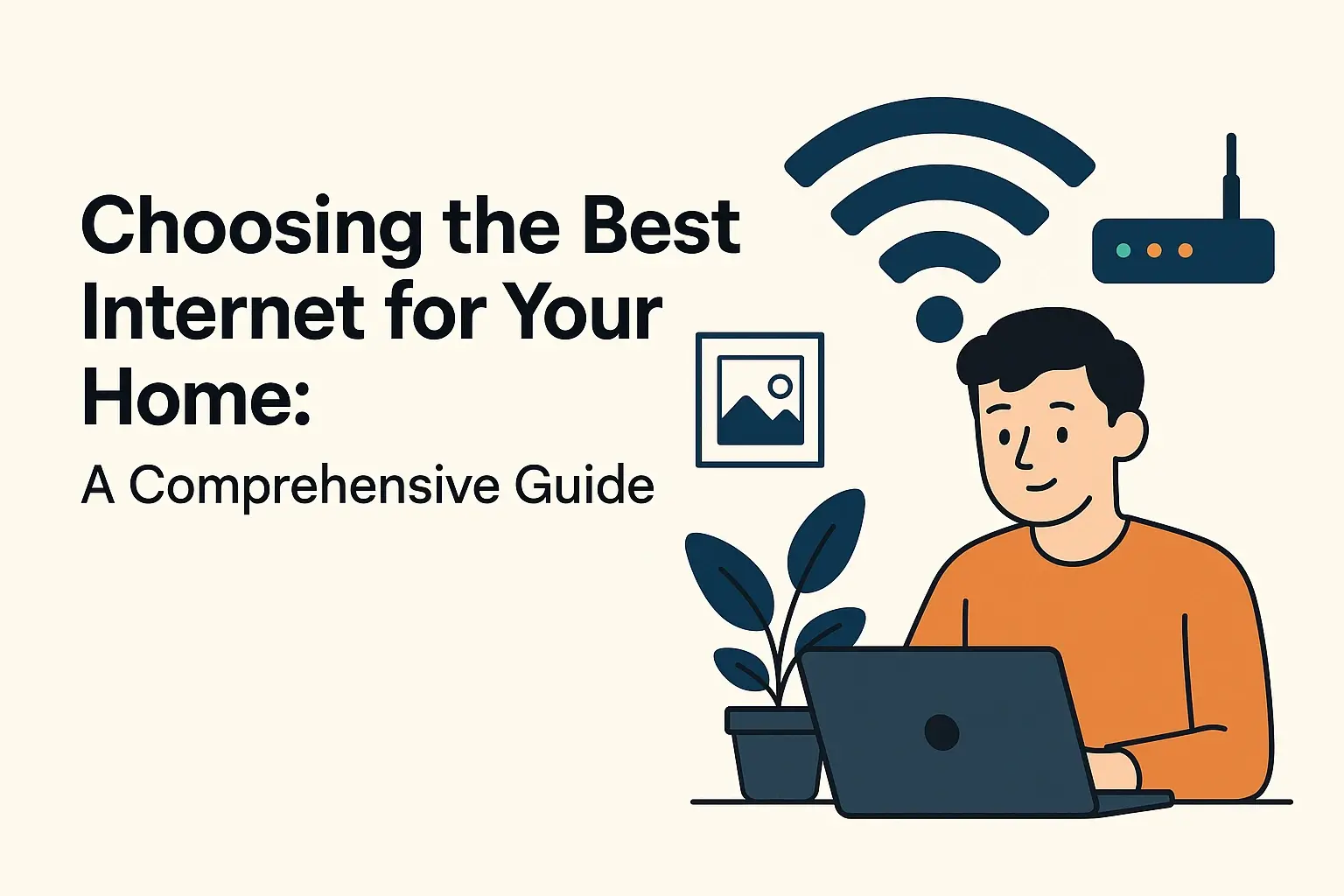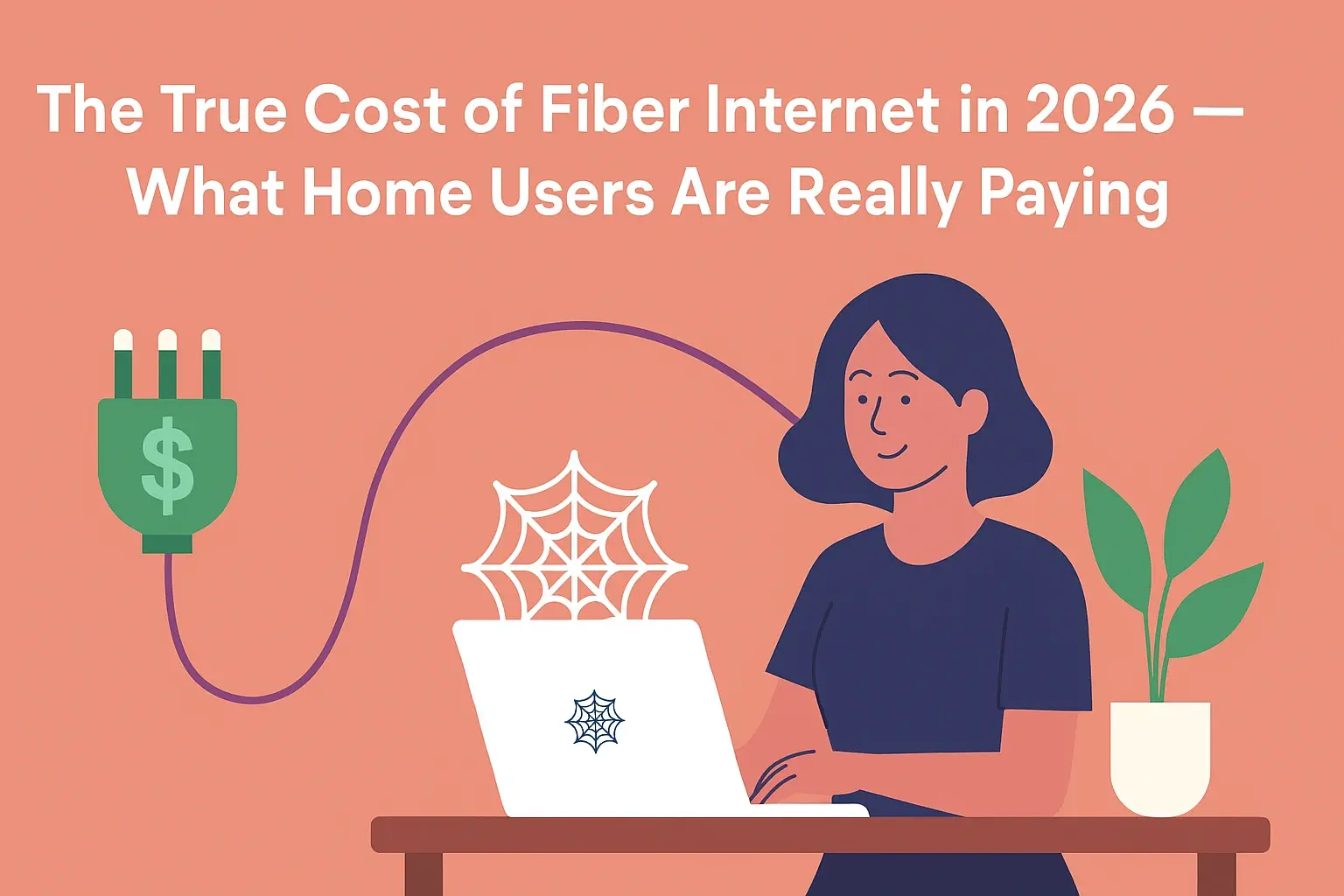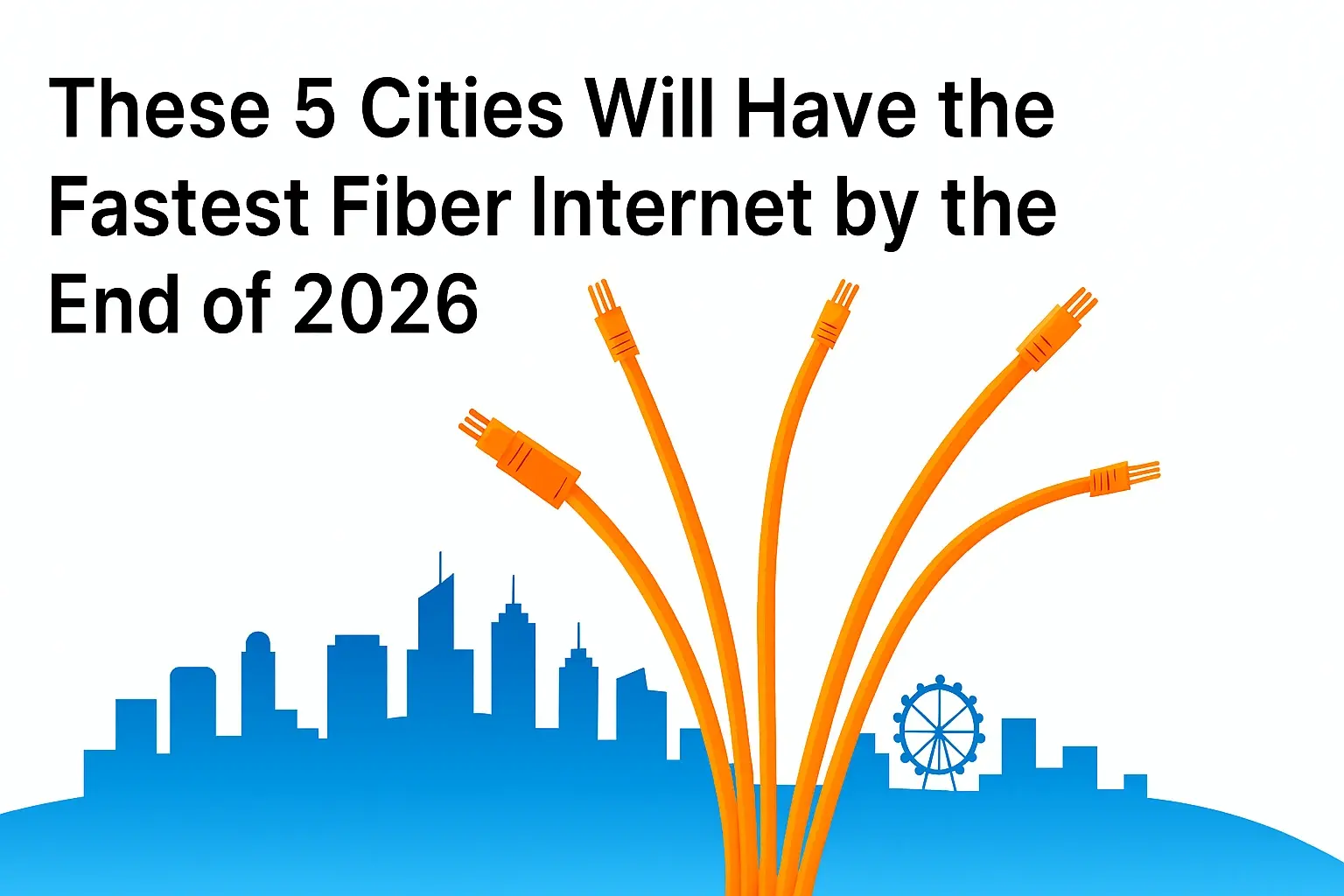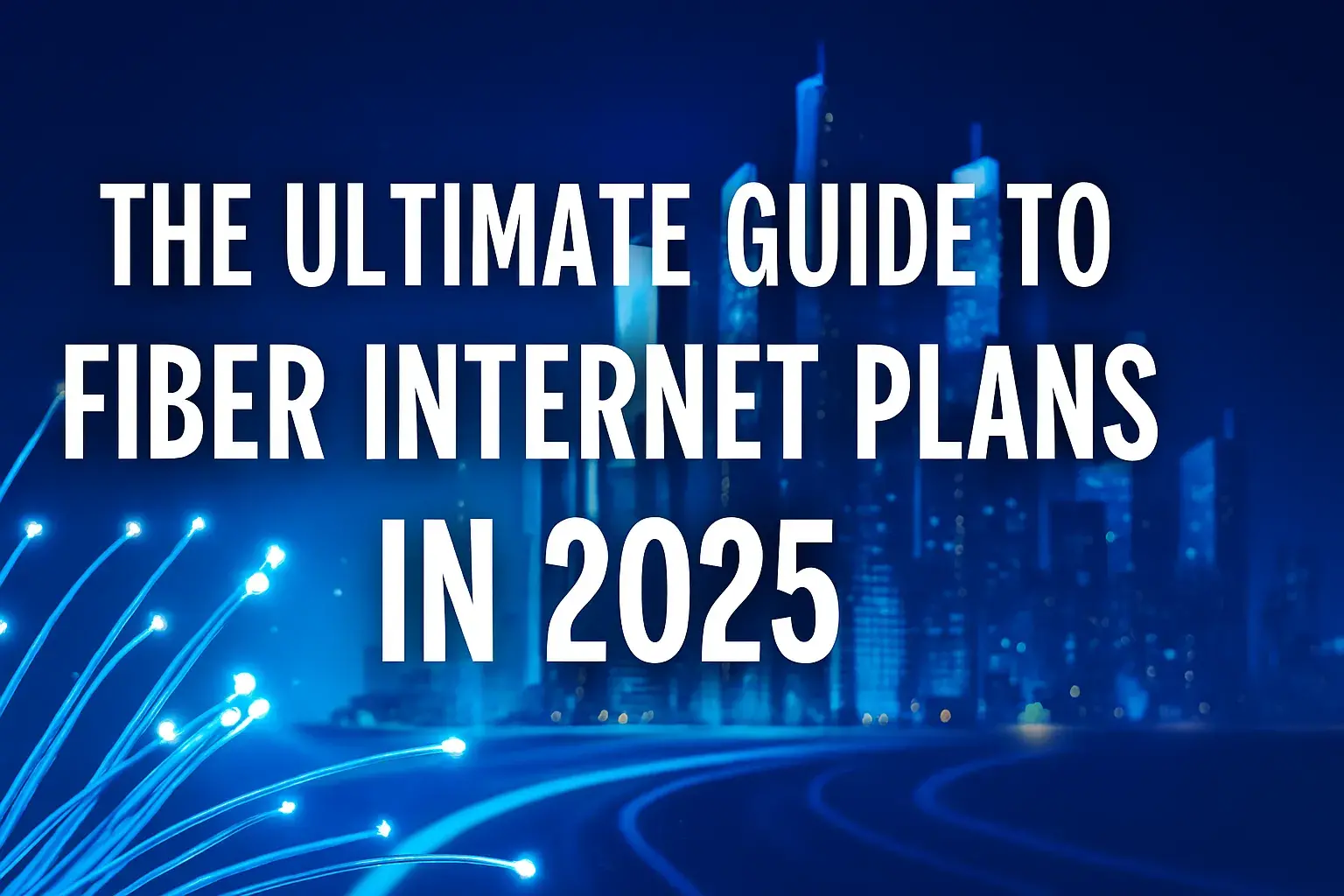Choosing the Best Internet for Your Home: A Comprehensive Guide

Navigating the complex world of home internet providers can feel overwhelming. This guide cuts through the jargon, offering a clear, actionable roadmap to selecting the ideal internet service that balances speed, reliability, and budget for your unique needs in 2025.
Understanding Your Internet Options
In 2025, the landscape of home internet connectivity offers a variety of technologies, each with its own strengths and weaknesses. Understanding these fundamental differences is the first crucial step in making an informed decision. The primary types of internet connections available to most households include DSL, Cable, Fiber Optic, and Fixed Wireless/Satellite.
1. Digital Subscriber Line (DSL) Internet
DSL internet leverages existing copper telephone lines to transmit data. It's one of the older forms of broadband but remains a viable option in areas where newer technologies haven't yet reached. DSL speeds can vary significantly depending on the distance from the provider's central office; the further away you are, the slower the connection tends to be. While generally more affordable than other options, its download and upload speeds are typically lower, making it less suitable for heavy streaming, online gaming, or large file downloads.
- Pros: Widely available, often budget-friendly, uses existing phone lines.
- Cons: Slower speeds compared to other technologies, performance degrades with distance, often asymmetrical (much slower upload than download).
2. Cable Internet
Cable internet utilizes the same coaxial cables that deliver cable television. This technology is a significant step up from DSL in terms of speed and reliability. Cable internet providers can offer substantial download speeds, making it a popular choice for households with multiple users and devices engaging in activities like streaming HD video, video conferencing, and online gaming. However, cable internet is a shared network. This means that during peak usage hours in your neighborhood, your speeds might experience a dip as more users are online simultaneously.
- Pros: High download speeds, widely available in urban and suburban areas, competitive pricing.
- Cons: Speeds can fluctuate during peak hours due to shared network, upload speeds are typically lower than download speeds.
3. Fiber Optic Internet
Fiber optic internet is considered the gold standard for speed, reliability, and latency. It uses thin strands of glass or plastic to transmit data as pulses of light. This technology offers incredibly fast download and upload speeds, often symmetrical (meaning upload speeds match download speeds), which is ideal for professionals working from home, heavy content creators, and households with numerous connected devices. Fiber optic networks are also less susceptible to interference and degradation over distance than copper-based technologies. The main limitation is its availability; fiber infrastructure is still being expanded and is not yet ubiquitous.
- Pros: Extremely high speeds (both download and upload), very reliable, low latency, less affected by distance or network congestion.
- Cons: Limited availability, can be more expensive than other options.
4. Fixed Wireless and Satellite Internet
Fixed wireless internet connects your home to a nearby tower wirelessly, often from a small antenna installed on your roof. Satellite internet, on the other hand, uses a dish to communicate with a satellite orbiting Earth. Both are excellent solutions for rural or remote areas where wired connections are impractical or unavailable. Fixed wireless generally offers better speeds and lower latency than satellite, but both can be affected by weather conditions. Satellite internet, in particular, can have higher latency due to the vast distance the signal must travel.
- Pros: Available in rural and remote areas where other options are absent.
- Cons: Can be slower and more expensive, prone to weather interference, higher latency (especially satellite).
Assessing Your Household's Internet Needs
Before you even look at provider websites, it's essential to understand how your household actually uses the internet. This self-assessment will prevent you from overpaying for services you don't need or being frustrated by a connection that can't keep up. Consider the number of users, the types of activities, and the number of devices.
1. Number of Users
How many people in your home regularly use the internet? A single user with basic browsing habits has vastly different needs than a family of five with teenagers streaming videos and parents working from home.
- 1-2 Users: Basic browsing, email, occasional streaming. Lower speeds might suffice.
- 3-4 Users: Moderate streaming, video calls, online gaming. Mid-range speeds are recommended.
- 5+ Users: Heavy streaming, multiple simultaneous online activities, smart home devices. High speeds are essential.
2. Types of Online Activities
What do you primarily use the internet for? Different activities demand different bandwidth and speed capabilities.
- Basic Browsing & Email: Requires minimal bandwidth. Speeds as low as 5-10 Mbps are often sufficient.
- Streaming Video (SD/HD): Standard definition (SD) streaming requires around 3-5 Mbps per stream. High definition (HD) requires 5-10 Mbps per stream. 4K streaming demands 25 Mbps or more per stream.
- Online Gaming: While download speed is important for game updates, latency (ping) is critical for real-time gameplay. Lower latency is better. Speeds of 25-50 Mbps are generally recommended for a smooth experience.
- Video Conferencing (Zoom, Teams): Standard definition video calls require about 1-2 Mbps upload and download. HD video calls need 2-3 Mbps upload and download. For professional use or multiple participants, 10-25 Mbps upload/download is advisable.
- Working from Home (Large Files, VPNs): Upload speed becomes as important as download speed for sending large files or maintaining a stable VPN connection. Speeds of 50-100 Mbps download and 10-25 Mbps upload are often recommended.
- Smart Home Devices: While individual smart home devices (thermostats, lights) use very little bandwidth, a large ecosystem can add up. Ensure your plan can handle the cumulative load.
3. Number of Connected Devices
In 2025, the average household has numerous connected devices. Think beyond laptops and smartphones: smart TVs, gaming consoles, tablets, smart speakers, security cameras, and even smart appliances all consume bandwidth. The more devices you have, the more robust your internet connection needs to be to avoid slowdowns.
Example: A household with two adults working from home (each on video calls), two teenagers streaming Netflix in HD, and a few smart home devices might easily have 10-15 devices connected simultaneously. This scenario would necessitate a plan with at least 100 Mbps download and 20 Mbps upload, ideally more.
Key Factors When Choosing an Internet Plan
Once you've assessed your needs, it's time to evaluate the specifics of internet plans. Several factors go beyond just the advertised speed, influencing your overall satisfaction and value.
1. Speed (Download and Upload)
Download Speed: This is the rate at which data is transferred from the internet to your device. It's crucial for activities like streaming, browsing, and downloading files. Measured in Megabits per second (Mbps).
Upload Speed: This is the rate at which data is transferred from your device to the internet. It's vital for video calls, uploading files, online gaming, and live streaming. Measured in Mbps.
Tip: Look for plans with symmetrical speeds (equal download and upload) if you frequently upload content or rely heavily on video conferencing.
2. Data Caps
Some internet plans, particularly satellite and some fixed wireless or DSL plans, come with data caps – a limit on the amount of data you can download or upload each month. Exceeding these caps can result in throttled speeds or expensive overage charges. Most cable and fiber plans in 2025 are unlimited, but it's always wise to verify.
- Unlimited Data: Ideal for heavy users, streaming, and households with many devices.
- Limited Data: Requires careful monitoring of usage. Suitable for very light users or as a budget option in specific circumstances.
3. Contract Length and Fees
Many providers require you to sign a contract, often for 12 or 24 months. Breaking a contract early can incur significant early termination fees (ETFs). Be sure to understand the contract terms, any potential price increases after an introductory period, and if there are any hidden fees (e.g., modem rental fees, activation fees).
Action: Always ask about introductory pricing versus the regular price and inquire about ETFs.
4. Reliability and Uptime
Speed is useless if the connection is constantly dropping. Reliability refers to how consistently your internet service works. Fiber optic connections are generally the most reliable, followed by cable. DSL can be less reliable due to line quality and distance. Satellite and fixed wireless can be affected by weather.
Research: Check online reviews and consumer reports for local provider reliability ratings.
5. Latency (Ping)
Latency, often referred to as ping, is the time it takes for a data packet to travel from your device to a server and back. It's measured in milliseconds (ms). High latency causes lag in online gaming and can make video calls feel choppy. Lower latency is always better.
- Low Latency (under 50 ms): Excellent for gaming and real-time applications.
- Moderate Latency (50-100 ms): Acceptable for most activities, but may impact competitive gaming.
- High Latency (over 100 ms): Noticeable lag in real-time applications.
6. Customer Service and Support
When issues arise, good customer service is invaluable. Look for providers with accessible support channels (phone, chat, email) and a reputation for resolving problems efficiently. Online reviews can offer insights into a provider's customer service quality.
Comparing Providers and Plans: A Deep Dive
With the foundational knowledge in place, let's dive into the practicalities of comparing what's available in your area. The providers and plans will vary significantly based on your geographic location.
1. Identifying Available Providers
The first step is to determine which internet service providers (ISPs) actually serve your address. Most major ISPs have online tools where you can enter your ZIP code or full address to see available technologies and plans.
- Major National Providers: Companies like Verizon, AT&T, Spectrum, Xfinity (Comcast), CenturyLink, T-Mobile Home Internet, Starlink, etc., operate across large regions.
- Local/Regional Providers: Smaller companies may offer service in specific towns or counties, sometimes providing competitive options or unique technologies like fixed wireless.
Tip: Don't rely on just one provider's website. Use comparison sites and check multiple sources to ensure you're seeing all options.
2. Understanding Speed Tiers and Pricing
ISPs typically offer several speed tiers for each technology. The price usually increases with speed. It's crucial to compare not just the advertised speed but the price per Mbps. Sometimes, a slightly more expensive plan offers significantly more speed, making it a better value.
Example Comparison Table (Hypothetical 2025 Data for a Suburban Area)
| Provider | Technology | Download Speed (Mbps) | Upload Speed (Mbps) | Monthly Price (Intro) | Monthly Price (After 12 Mos) | Data Cap | Contract |
|---|---|---|---|---|---|---|---|
| CableNet | Cable | 300 | 20 | $55 | $70 | Unlimited | 12 Months |
| FiberLink | Fiber | 500 | 500 | $75 | $85 | Unlimited | None |
| DSLPlus | DSL | 50 | 5 | $40 | $45 | 1 TB | None |
| WirelessNet | Fixed Wireless | 100 | 10 | $60 | $60 | 500 GB | 12 Months |
Interpreting the Table:
- If your priority is raw speed and symmetrical uploads for work, FiberLink at $75/month for 500/500 Mbps with no contract is a strong contender, despite being pricier than CableNet's intro offer.
- For a family with moderate streaming and gaming needs, CableNet's 300 Mbps plan might be sufficient. However, be aware of the price increase after 12 months and the contract.
- DSLPlus is the cheapest but offers significantly lower speeds and a data cap, making it suitable only for very light usage.
- WirelessNet offers a mid-range speed without a contract price hike, but the data cap needs careful consideration.
3. Evaluating Bundles
Many providers offer bundles that combine internet, TV, and phone services. While these can sometimes offer savings, it's essential to calculate if the bundled price is truly better than purchasing services separately. Sometimes, you end up paying for services you don't need.
Question to ask: "What is the price of just the internet service in this bundle?"
4. Checking for Promotions and Discounts
ISPs frequently offer introductory promotions, discounts for auto-pay, or bundles with streaming services. Always ask about current deals and eligibility requirements. Be mindful of how long these promotions last and what the price will be afterward.
5. Reading the Fine Print
This cannot be stressed enough. Before signing up, thoroughly read the terms of service, especially sections on data caps, pricing changes, contract lengths, and early termination fees. If anything is unclear, ask for clarification.
Installation and Setup Process
Once you've chosen a provider and plan, the next step is installation. Understanding this process can help manage expectations and ensure a smooth transition.
1. Scheduling the Installation
After signing up, you'll typically schedule an appointment for a technician to visit your home. Installation windows can vary from a few days to a couple of weeks, depending on demand and your location.
- Self-Installation: For some technologies like DSL or certain cable modem setups, you might be able to self-install with a provided kit. This can save you an appointment fee and offer more flexibility.
- Professional Installation: This is required for most fiber optic installations and for cable/DSL if new wiring is needed or if you prefer a professional setup.
2. What to Expect During Installation
A technician will run necessary cables to your home, install an outdoor or indoor modem/router, and test the connection. They will ensure you have a stable signal before leaving.
Preparation: Ensure clear access to where the technician will be working, both inside and outside your home. If you have specific placement preferences for your modem/router, communicate them clearly.
3. Equipment: Modems and Routers
Your ISP will either provide you with equipment (often for a monthly rental fee) or allow you to use your own compatible modem and router. Owning your equipment can save money in the long run, but ensure it meets the provider's specifications.
- Modem: This device translates the signal from your ISP into a format your network can use.
- Router: This device creates your home Wi-Fi network, allowing multiple devices to connect wirelessly to the internet and to each other.
Recommendation: If your ISP charges a monthly fee for modem/router rental, compare that cost over two years to the purchase price of a quality third-party device. For Wi-Fi performance, consider a mesh Wi-Fi system for larger homes.
4. Setting Up Your Wi-Fi Network
After installation, you'll need to set up your Wi-Fi network. This typically involves choosing a network name (SSID) and a strong password. Most modern routers have user-friendly web interfaces or mobile apps for this process.
Security Tip: Use a strong, unique password for your Wi-Fi. Avoid easily guessable names or passwords. Enable WPA2 or WPA3 encryption.
Managing Your Internet Experience and Troubleshooting
Once your internet is up and running, ongoing management and basic troubleshooting can save you time and frustration.
1. Optimizing Your Wi-Fi Signal
The performance of your internet within your home is heavily influenced by your Wi-Fi setup. Here are tips to improve it:
- Router Placement: Place your router in a central, open location, away from obstructions like thick walls, metal objects, and large appliances. Avoid placing it in corners or behind furniture.
- Minimize Interference: Microwaves, cordless phones, and Bluetooth devices can interfere with Wi-Fi signals. Keep your router away from these.
- Update Router Firmware: Regularly check for and install firmware updates for your router. These often include performance improvements and security patches.
- Consider a Mesh Wi-Fi System: For larger homes or areas with dead zones, a mesh system with multiple nodes can provide consistent coverage.
2. Monitoring Your Internet Speed
It's a good practice to periodically test your internet speed to ensure you're getting what you pay for. Use reputable speed test websites (e.g., Speedtest.net by Ookla, Fast.com by Netflix).
Troubleshooting Step: If your speed tests are consistently lower than your plan's advertised speeds, try testing with a device connected directly to the router via Ethernet cable to rule out Wi-Fi issues.
3. Common Troubleshooting Steps
Before calling customer support, try these basic steps:
- Restart Your Modem and Router: Unplug both devices, wait 30 seconds, and plug them back in. This resolves many temporary glitches.
- Check Physical Connections: Ensure all cables are securely connected to your modem, router, and wall jack.
- Test on Multiple Devices: See if the problem affects all devices or just one. If it's one device, the issue might be with that device's settings or hardware.
- Check for Outages: Visit your ISP's website or social media for any reported service outages in your area.
- Bypass the Router: Connect a computer directly to the modem via an Ethernet cable to see if the problem persists. This helps determine if the issue is with the modem or the router.
4. Understanding Throttling and Data Usage
If you have a plan with a data cap, keep track of your usage. Many ISPs provide online tools or apps to monitor your data consumption. If you're frequently nearing your cap, you may need to upgrade your plan or adjust your usage habits.
Note: Some ISPs may also "throttle" your speeds after you exceed a certain data threshold, even on plans advertised as "unlimited." Always check the specifics.
5. When to Contact Your ISP
If you've tried the basic troubleshooting steps and are still experiencing persistent issues, it's time to contact your ISP's customer support. Be prepared to explain the problem, the steps you've already taken, and any speed test results you have.
Tip: Keep a log of your internet issues, including dates, times, and any error messages. This can be very helpful when speaking with support.
Choosing the best internet for your home in 2025 involves a blend of understanding technology, assessing your unique household needs, and carefully comparing provider offerings. By following this comprehensive guide, you can move beyond confusing marketing jargon and select a service that delivers the speed, reliability, and value you deserve. Remember to prioritize fiber optic if available for the best long-term performance, consider cable for a strong balance of speed and availability, and explore fixed wireless or satellite only when wired options are not feasible. Your internet connection is a vital utility; invest the time to make the right choice.





